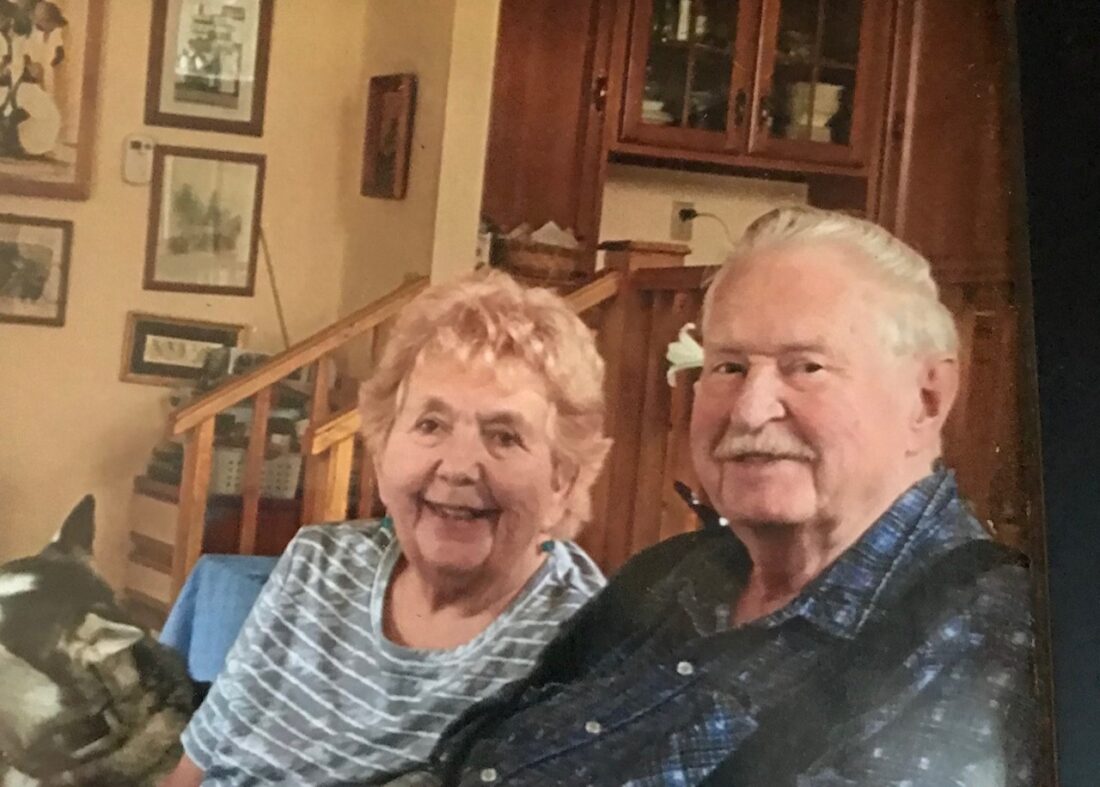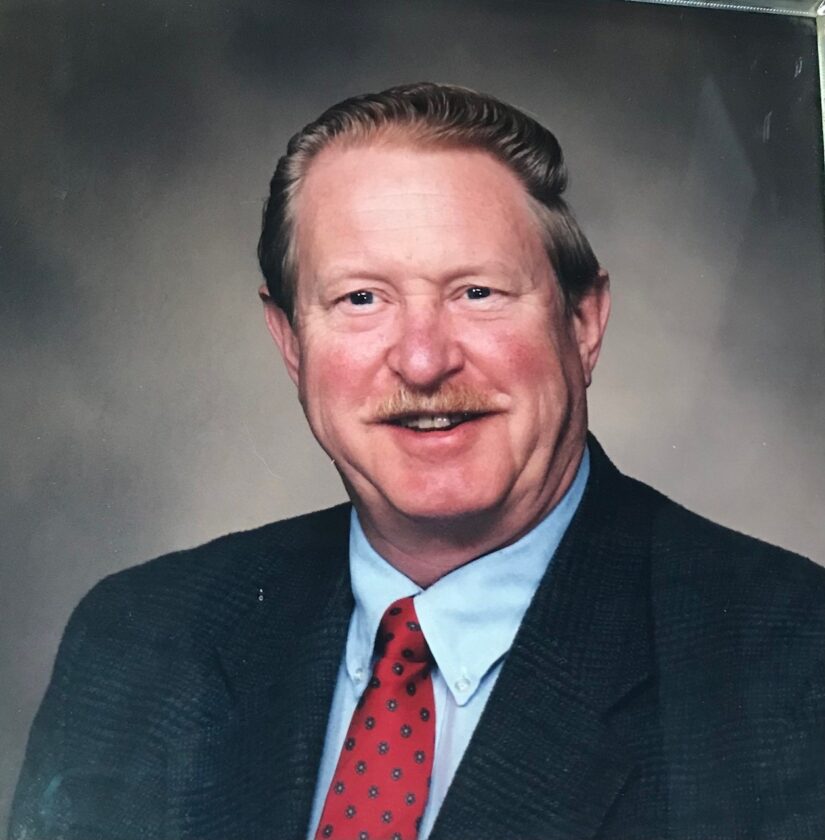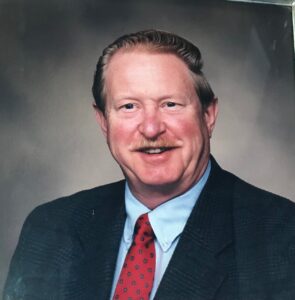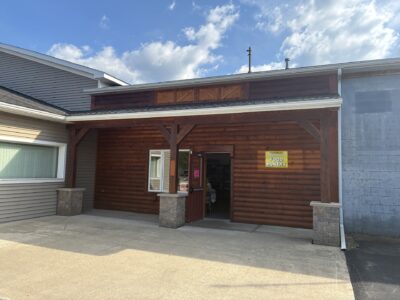Always The Park
Nonagenarian Lived and Worked In ASP
- Chuck and Molly Lindberg met at the Park when she was camping with girlfriends. They were married 60 years at the time of her death in 2018.
- Chuck Lindberg worked at Allegany State Park for most of the years between the ages of 12 and 60. Submitted photo

Chuck and Molly Lindberg met at the Park when she was camping with girlfriends. They were married 60 years at the time of her death in 2018.
Chuck Lindberg, who just crossed over from being an octogenarian in September, has had a very interesting life and is still outdoing many people half his age. He had so many interesting stories to tell, I made this a two-part story!
Life on earth for the town of Coldspring man began at Salamanca Hospital in 1932. He was named Charles after his paternal grandfather and his mother’s maiden name, Ashdown, was given for his middle name. Interestingly, he has been asked if he had a connection to the famous aviator Charles A. Lindbergh who made the historic non-stop flight from New York City to Paris in 1927. Some have even wondered if he could have been the man’s 20-month old child, who was kidnapped earlier in 1932, apparently not thinking a kidnapper would change more than the spelling of the baby’s last name or give him their own!
The way Lindberg spent his childhood is more than any young boy could ever dream, or at least a boy born before the time when every kid owned a cellphone and played computer games.
His father was the Chief Ranger at Allegany State Park, which opened just 11 years before his son’s birth. The Administration Building went into service in 1930 and since travel wasn’t especially good at that time, five houses were built near it to keep the help onsite. The Lindberg house, just 300 yards from the large stone building, was the first home to be occupied. The senior Lindberg’s office was located in the Administration Building.
“I hung out in the Administration Building an awful lot,” says the 90-year old. “There was a zoo behind the building and I spent my summers there. All animals indigenous to the area were there, snakes and turtles all the way up to a black bear.”

Chuck Lindberg worked at Allegany State Park for most of the years between the ages of 12 and 60. Submitted photo
The Civilian Conservation Corps (CCC) oversaw the zoo. President Franklin D. Roosevelt established the program in 1933 during the Great Depression to provide young men work at public lands, forests and parks.
Lindberg fondly recalls much time spent with Mark and Lillian Smith, who were the janitors in the large building. His playmate and next-door neighbor was the son of the Executive Secretary. The schoolhouse burned down the day before his pal was to start school, therefore Lindberg’s father opened the conference room as a temporary location for the school. Young Lindberg, who was not quite four-years old, would leave early each day after telling his mother he was going to see his dad. Unbeknownst to the parents, the boy was spending his days sitting in the classroom where the teacher thought he was of school age.
“I was almost out of the first grade before anyone knew I was going to school.”
Later a new one-room school was built near the Park’s dam.
“We didn’t have organized sports like we do today. In the spring and fall we played lots of softball and Annie, Annie Over and other outdoor games. In the winter some of the kids would play across the road on the ski jumps. Others would stay inside and play with the little kids. I played a lot of London Bridge Is Falling Down.”
He chuckled when he told about the time some of the boys talked another into taking his sled up the 30 meter ski jump. The sled dropped the nearly 100 feet into the snow while the boy continued gliding across the frozen, white ground.
He was one of two students that graduated from the little school after eighth grade before continuing on for another four years at Randolph High School, graduating in 1949.
“Because the CCC had gone to war, their camp was left empty. When I was a 10-, 11-, 12- and 13-year old kid, we used to play in the abandoned CCC Camp,” he reminisced. “We had a barracks and in the library were many pamphlets about trees. About two barracks buildings were used for employee housing afterward.”
Because the local young men had been drafted to fight in World War II, his father had to put together a crew of 12- and 13-year old boys to fight fires, fires which were mostly caused by steam locomotives. The brave young firefighters were paid 82 cents per hour. Lindberg told about the day he decided to strap a firefighter’s water tank on his back because he was tired of raking leaves to stay ahead of the fires. When he climbed over a fence, he fell on his back and felt like an overturned turtle as he struggled to get on his feet.
He took on his second job, working for a couple from Buffalo who purchased a farm two doors down from his family’s home. By this time, his parents had built a house on Red House Road, which was still inside the Park.
“They started the Saddle House, a riding academy. I worked with the horses, basically a groom, the summer I was 13.”
The next year he returned to the park as a “cabin cleaner and general roustabout.” He continued working there summers until after graduation from high school when he went on to attend New York State Rangers School. The school’s 2,800-acre campus is located in the midst of the six million-acre Adirondack Park at Wanakena, New York. At that time, it was a one-year course, but is now a two-year associates degree course.
“That was quite a noted ranger school at the time,” says its former student. “They taught surveying as a secondary subject and that laid the foundation for my engineering occupation.”
After graduating from Ranger School, he worked at Courtney Norton’s sawmill in Great Valley, NY.
“Being somebody that doesn’t like to work too hard, I worked the next summer driving a garbage truck (in the Park).”
He was drafted in November of 1952, during the Korean War and served two years in the United States Army.
“I lucked out. I became an instructor and stayed in our country.”
He decided to go back to college in 1955, after his stint in the Army, a short time on a job at Fancher Furniture in Salamanca and a year working as a Park Patrolman at his old stomping grounds. This time he studied at NYS College of Forestry at Syracuse returning to his old job of driving the Park’s garbage truck each summer.
The garbage men carried rakes to clean up the messes made by the bears as they rummaged through the cans. Lindberg became quite familiar with a bear who had a bald area in his fur due to the mange. It seemed that the animal had a respect for the young man, because when the bear was into mischief, the garbage truck driver would give him a nudge with his foot to his back side and the bruin would move on. Lindberg thought his interaction with the bear impressed the young girls who stayed in the cabins. It was at this time he met his wife, Molly, who was camping in the Park with friends. One day, as soon as his foot made contact with the animal, he noticed there was no bare patch in its fur. The startled bear, who had no fondness for Lindberg, immediately stood up on his hind feet, ending the macho man’s reputation with the girls.
To be continued.







